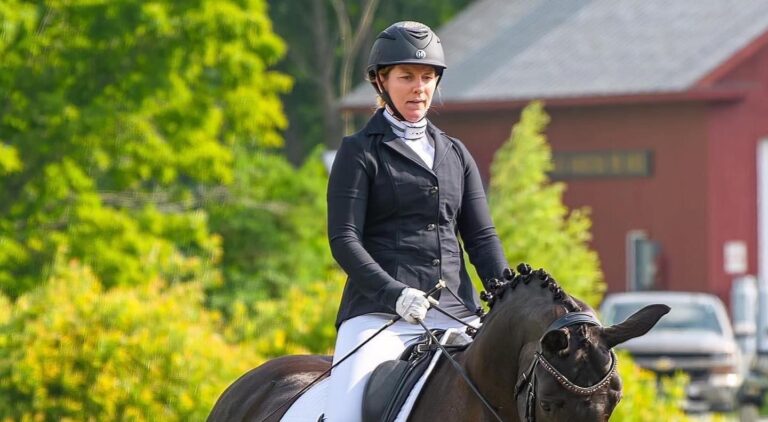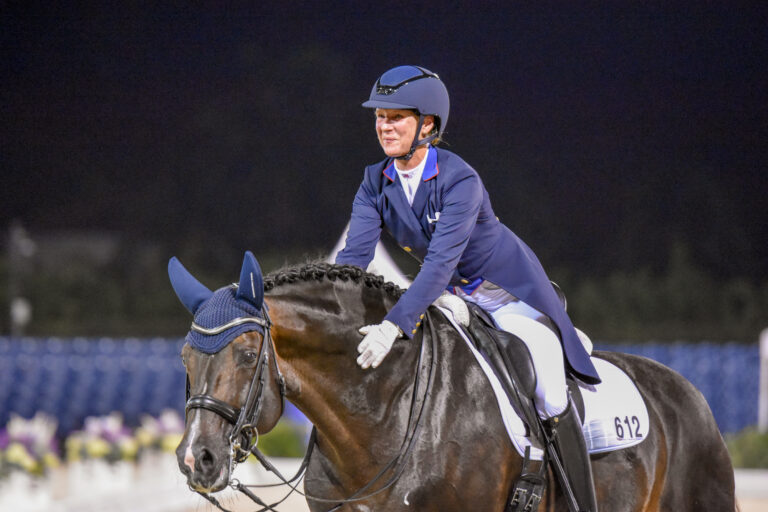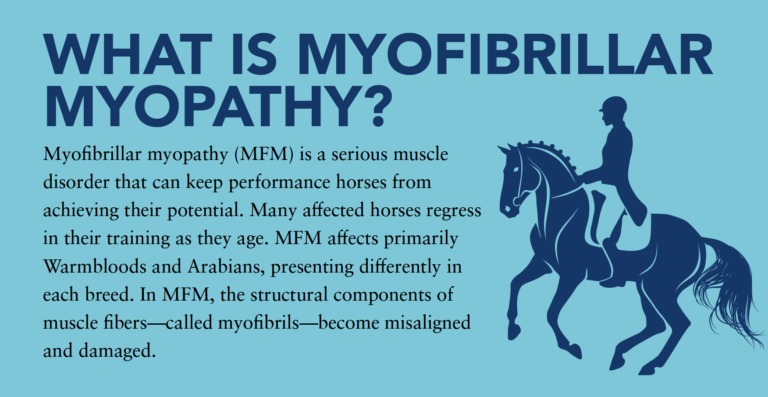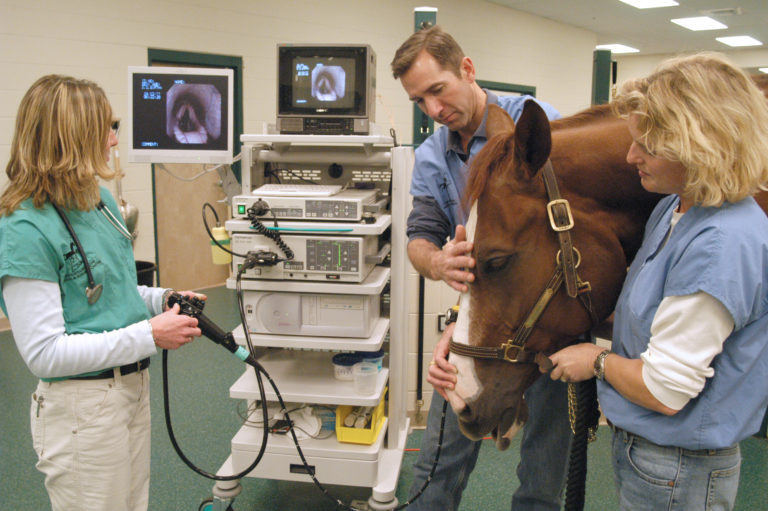Days, months or even years of work go into preparing your horse for the show ring. But what do you do once you arrive at the show? Each hour between arriving at the show and your ride time can be used to help you achieve show-ring success. I will share some tips that my students and I use to make the most of our time at the venue.
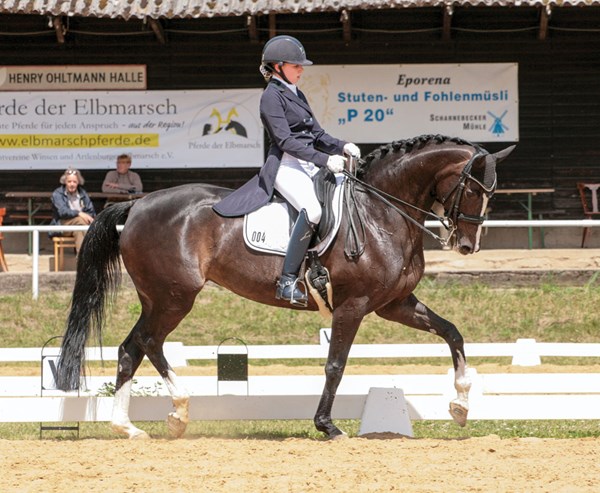
Pre-Warm-Up
Begin to prepare your horse for the test when you arrive at the showgrounds. Every action between your arrival and the warm-up ride affects your horse’s state of mind. To influence him positively, keep the following in mind:
- Figure out the exact combination of work and relaxation for the ride the day before the test. For example, sometimes I work the horse harder to get him a bit tired so I can do a shorter warm-up the next day.
- Help the horse be as comfortable as possible in the stall at the show. Pay attention to how he feels and know his preferred routine in the stable.
- Try to maintain an atmosphere in the stable that is positive and uplifting. If I am nervous, I listen to NPR while I braid to keep my mind occupied. Horses have an amazing ability to recognize different moods, and I want my mount in a positive frame of mind before the test.
- Learn what activities your horse likes before you get on. For example, does a hand-walk before the ride relax him?
- Depending on the ride time and the weather, some horses do better schooling in the morning with a break before the warm-up for a test later in the day. The first ride can be short: 10 to 15 minutes. I may do a bit of walk, trot and canter and, just as the horse feels like he’s working through his back, I finish up, pat him and put him back in the stall. Before the test, I can warm up lightly and go into the ring with the horse nice and fresh.
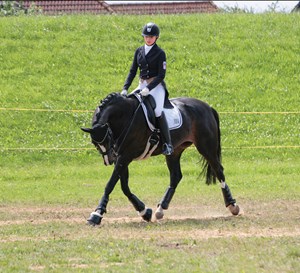
Warm-Up Goals
The purpose of the warm-up is to prepare you for a solid, clean, harmonious test. In the best tests, the rider has control over every footfall. To achieve this, the horse must be on the aids and listening to the rider. Horse and rider must also be prepared to do the exercises in the test
Getting the horse on the aids. During the warm-up, the rider’s job is to get the horse listening to him. First, I always make sure the horse walks for 15 minutes to get his muscles and joints ready to work. Then I begin to warm up the trot and canter. I make sure that the horse is on the aids by doing many transitions. Sometime I do transitions between the gaits, such as trot–canter–trot, and sometimes I do them within the gaits, such as working trot–lengthening–working trot. The goal of the transitions is that my horse listens to my seat so I can do less with the reins. After the horse is warm, I ride some selective movements to get ready for the test.
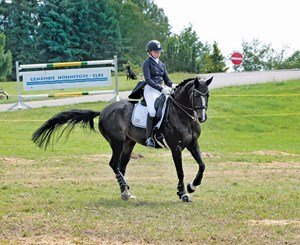
Choosing the correct exercises. Keep in mind that you need to perform each movement only once during the test. Use the warm-up as a way to prepare yourself and your horse for that moment. I see riders drill test movements in the warm-up, and they may even do the movement perfectly. But when they go in the competition arena, that same movement has a mistake. Don’t try to win the warm-up. Use that time to school the horse for the test by choosing movements that will get him listening to your aids. This concept applies to all levels. For example, if you always practice the transition from working trot to medium walk at A, as it appears in many tests, your horse may begin to anticipate that transition and slow down on the short side. To keep him listening to your aids, ride the transition in a different location or walk at A and then immediately trot again to check that the horse doesn’t anticipate the walk there.
At the upper levels, consider the half-pirouettes on the diagonal as they appear in the Prix St. Georges. When you ride the test, your horse might anticipate the movement. Before you ask and are ready to turn, he could start to collect on the line and lose rhythm and power, causing a mistake in the pirouette. Drilling the movement from the test could make the horse anticipate more. Instead, use the warm-up to school by riding medium canter on the diagonal. Collect, but then don’t turn, or when you decide to turn, do a big, forward schooling pirouette. Perhaps practice a full pirouette and stay in it until the horse asks you if he can go out. Now he is listening to you instead of taking over and is ready for the half-pirouette as it appears in the test.
Some horses and riders find it useful during the warm-up to go through some of the movements exactly as they are in the test. To make the horse more rideable as you practice, ride many transitions. In First Level, Test 2, the leg yield appears from the centerline to the wall. You must ride the exact movement to practice the angle, but you don’t want to ride onto the centerline and have the horse start falling sideways on his own.
In the Prix St. Georges, after the volte from E or B, the trot half pass to G can create the same anticipation problem. You might practice the leg yield or half pass movement from the test but do trot–walk–trot transitions to make sure the horse is waiting for you and accepting the half halts. Make the leg yield or half pass longer and more shallow or try for more sideways movement. Ride the movement for a shorter length or make the steps quicker. Don’t simply do the leg yield or half pass from the test. You want to feel you have control of each step. The horse should wait for the aids and ask what you want him to do next. He should not just be in a frame, going around on autopilot.
For me, the most important concept for success in the show ring is to pay attention to the horse. To have a solid test, start weeks beforehand. Get to know the horse and experiment with different show-day plans to find the one that works the best for you and him.
Endel Ots is a dressage rider and trainer who has trained with Hubertus Schmidt in Germany and Lars Petersen in Florida. A USDF bronze, silver and gold medalist, Ots was named an alternate rider for the U.S. Dressage Team at the 2011 Pan Am Games. He owns and operates his own training and sales business in Wellington, Florida.


